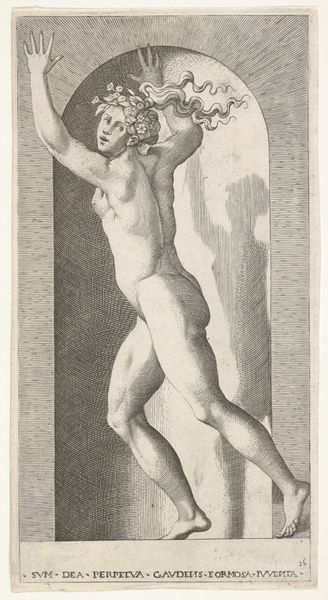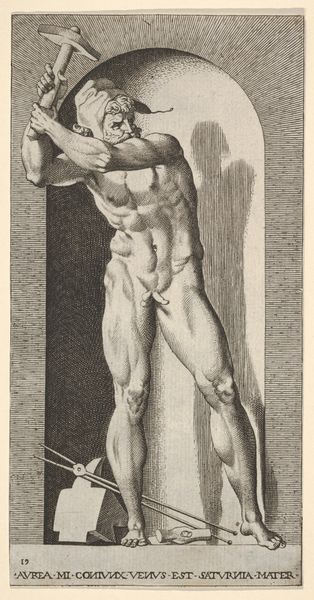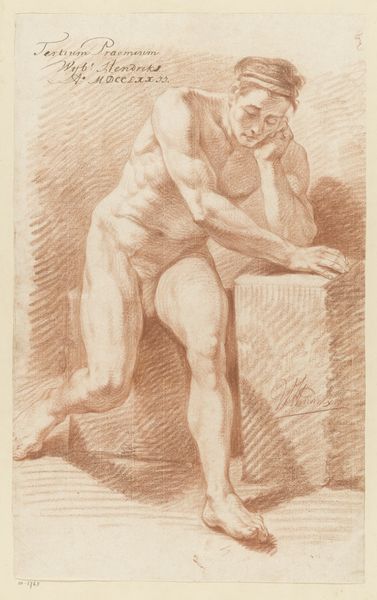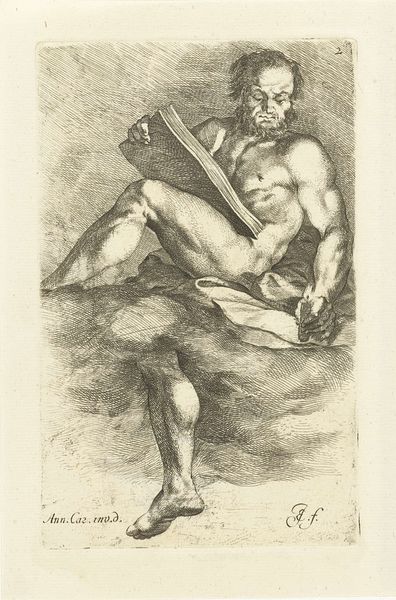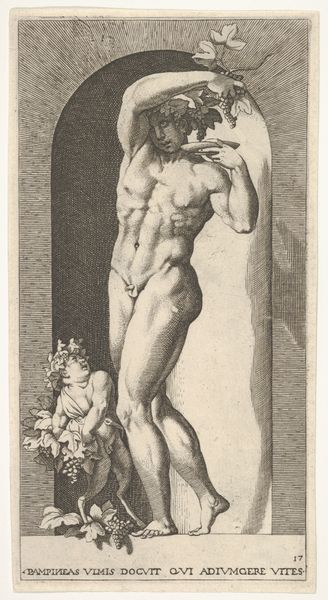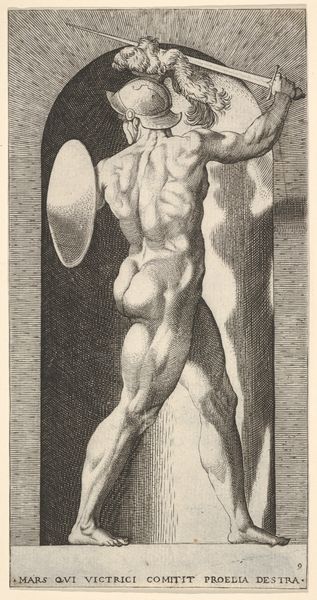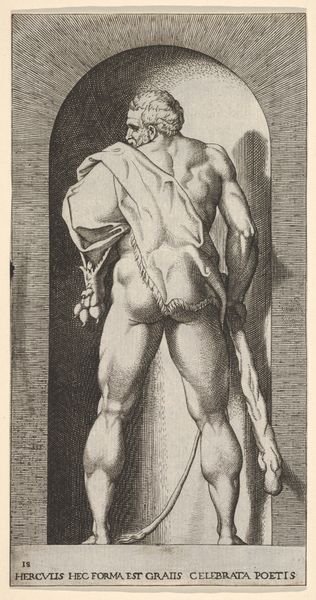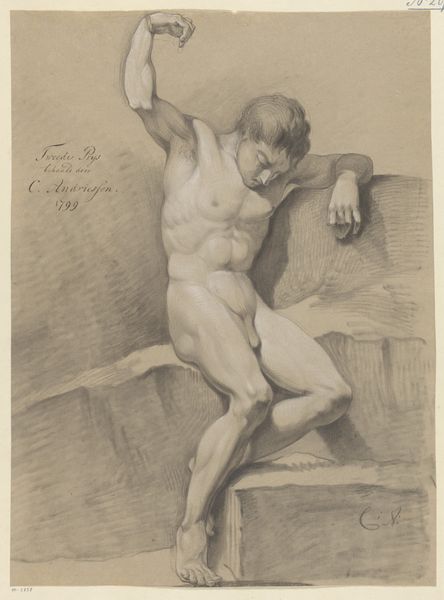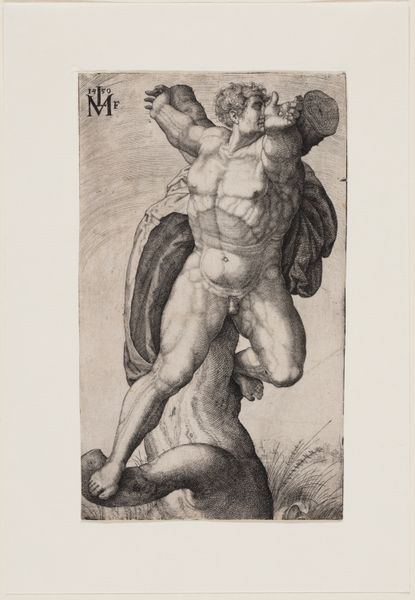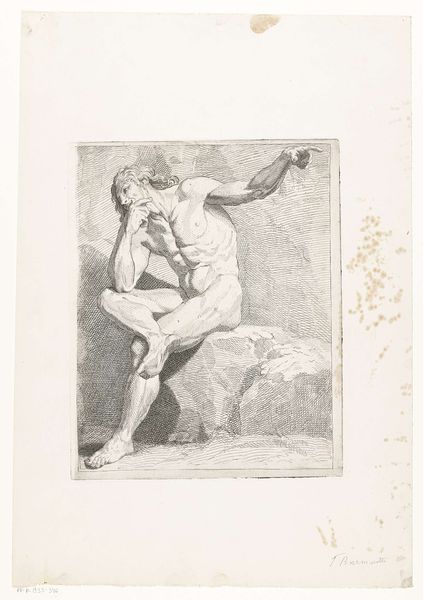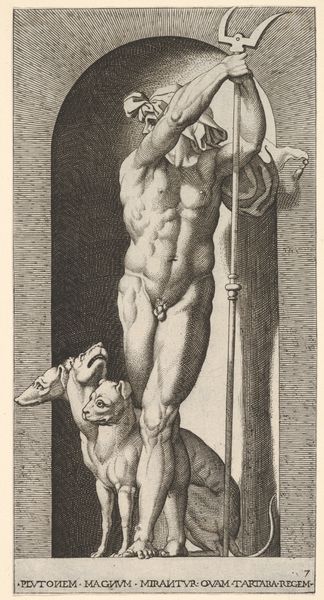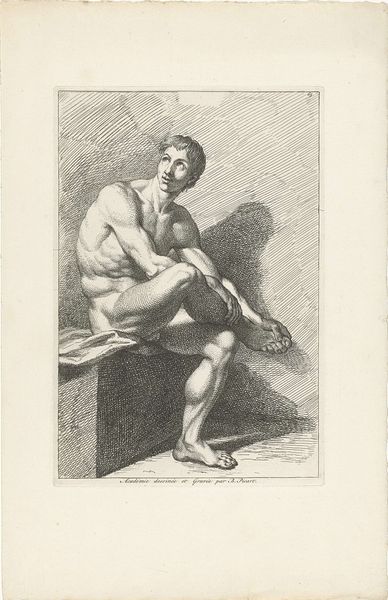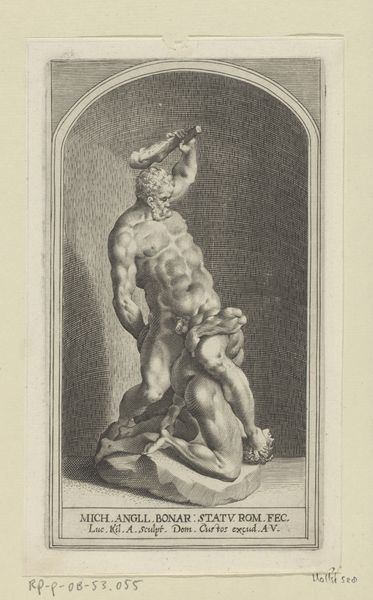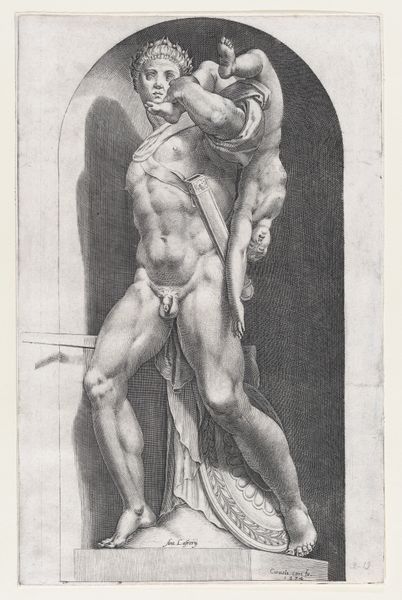
etching
#
baroque
#
etching
#
figuration
#
history-painting
#
nude
Dimensions: height 233 mm, width 187 mm
Copyright: Rijks Museum: Open Domain
Editor: Here we have Jan de Bisschop’s etching, "Seated Nude Youth," dating back to between 1667 and 1671. The starkness of the etching, juxtaposed with the almost luminous rendering of the figure's skin, is really striking to me. The whole composition has such a contemplative mood. What do you see when you look at this piece? Curator: The linear quality immediately presents itself. Bisschop uses line not just to define form, but to model volume and light. Observe how the density of hatching and cross-hatching creates tonal variation across the youth’s body and the surrounding forms. This emphasis allows our eyes to read light across curved forms that imply motion. Editor: It’s like he’s building the image with tiny, careful scratches. Curator: Precisely. Notice the positioning of the figure: the torsion in his torso, the turn of his head. What do these visual cues suggest to you? Editor: A sense of dynamism, definitely. But there's also that strange box of what looks like death masks...It seems to anchor him to a specific, historical reality in contrast to that abstract ideal he represents with the perfect lines of his physique. Curator: You astutely identify a central tension: the interplay between idealized form and stark, perhaps, moralizing motifs. Look closer: see how those faces interact and move between and behind each other. They are almost clamoring in conversation together to present a complete story. What meaning emerges in your analysis of this tension? Editor: I hadn't thought about them that way. Maybe it's about reconciling the ideal and the real, beauty and mortality... the sphere might stand for a sort of enlightened understanding, poised over a sort of mass of collected knowledge. Curator: Yes, precisely so. Bisschop encourages a dialogue between visual form and allegorical interpretation. Editor: I see. It makes the work more dynamic somehow. Thanks for sharing!
Comments
rijksmuseum about 2 years ago
⋮
The inscription on this print translates as: ‘Michelangelo Buonarotti invented this, Sebastiano del Piombo drew it.’ Jan de Bisschop was thus under the impression that the (adjacent) drawing was not by Michelangelo himself, but rather a copy by Sebastiano del Piombo. Michelangelo and this Venetian painter were friends for many years until they quarreled bitterly and parted ways.
Join the conversation
Join millions of artists and users on Artera today and experience the ultimate creative platform.
